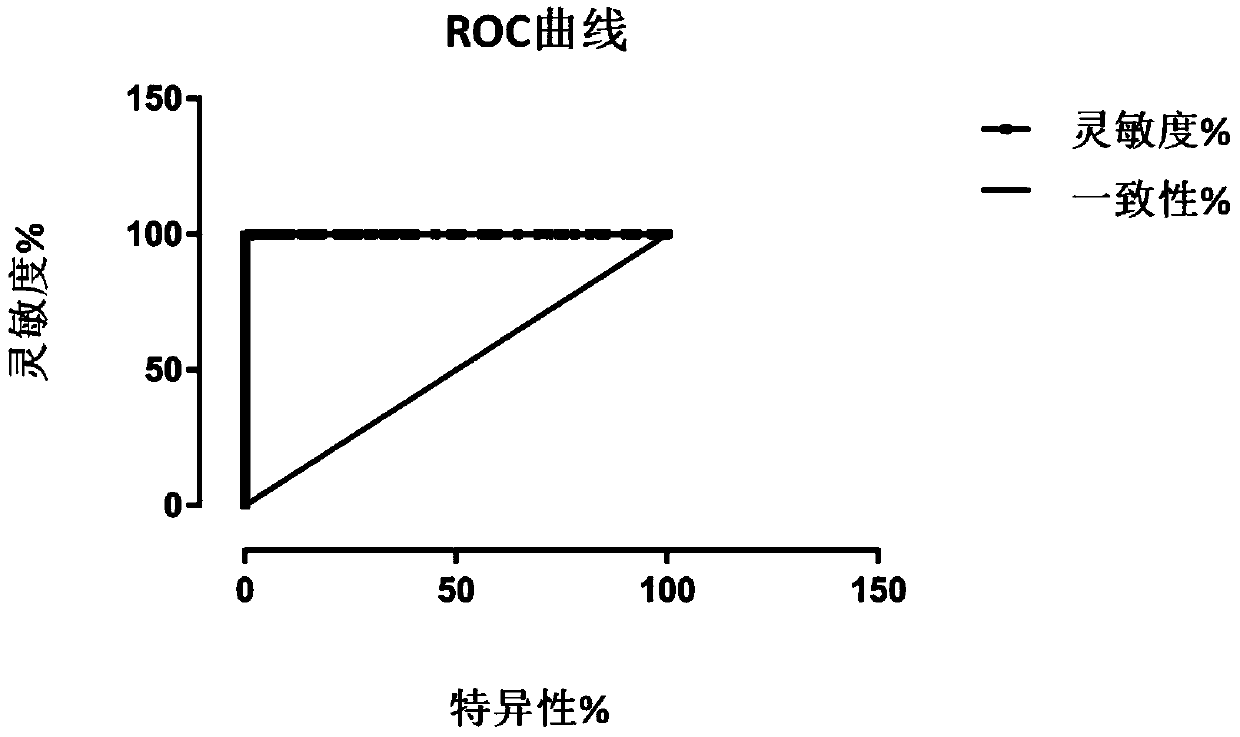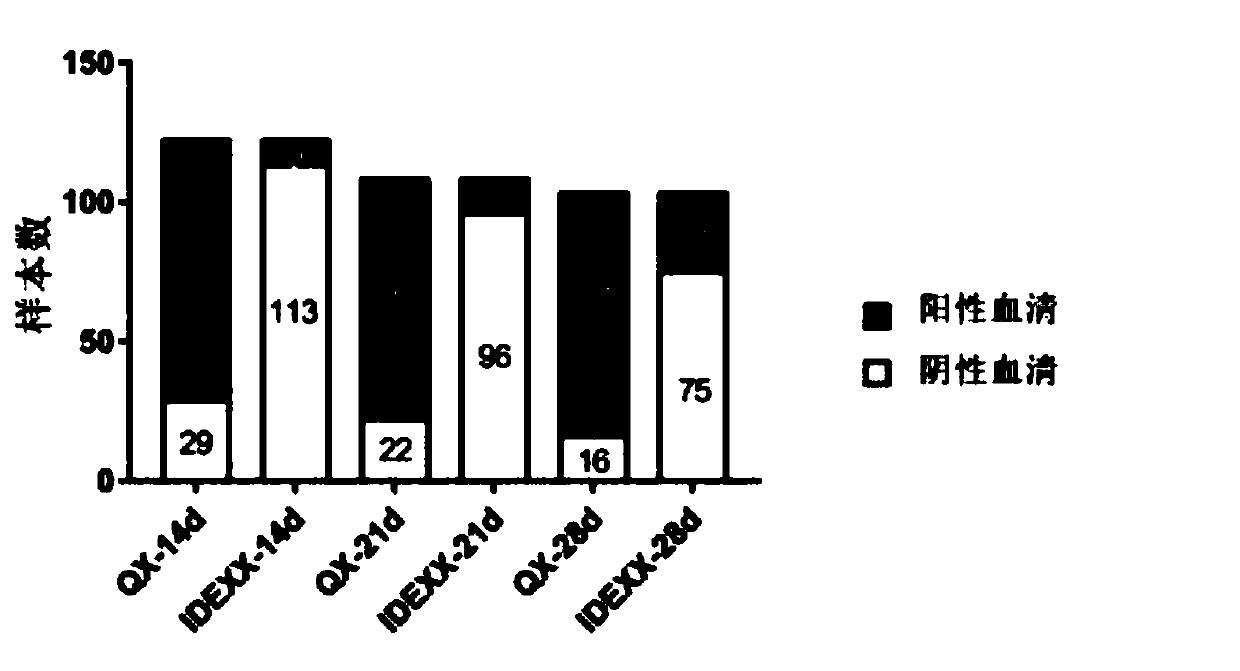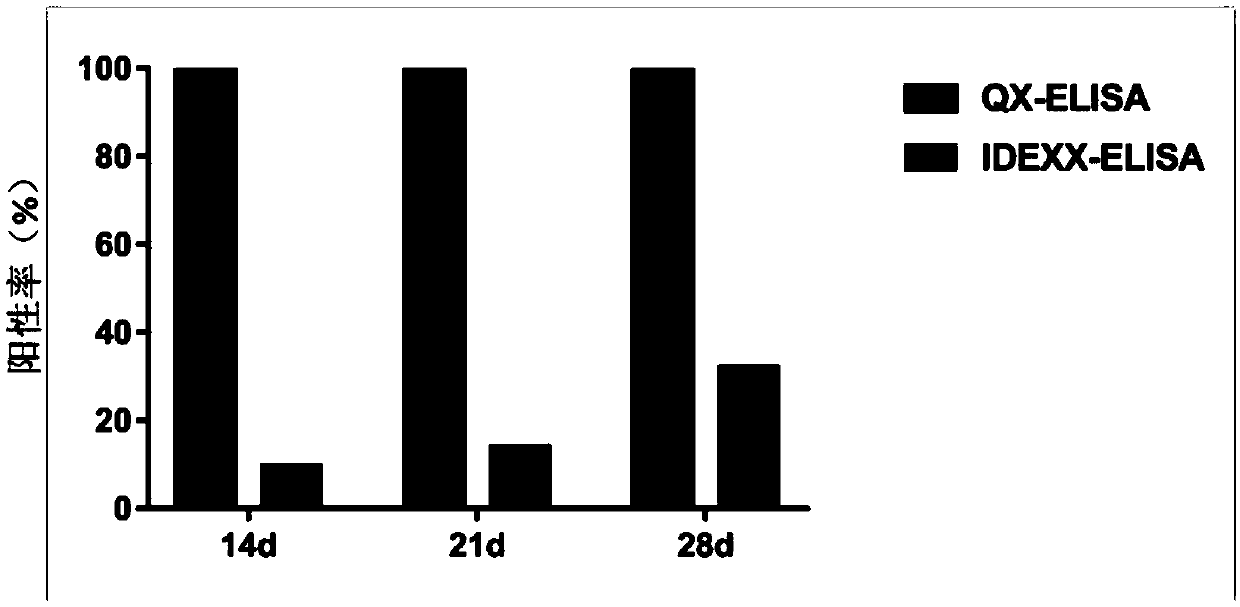Application of QX type IBV cellular adapted strain MJ to preparation of totivirus antigen ELISA inspection kit and kit
A technology for detecting kits and adapting strains, which is applied in the direction of measuring devices, instruments, scientific instruments, etc., can solve the problems of low specificity of ELISA detection kits, and achieve the effects of excellent sensitivity, low cost and strong specificity
- Summary
- Abstract
- Description
- Claims
- Application Information
AI Technical Summary
Problems solved by technology
Method used
Image
Examples
Embodiment 1
[0097] The whole virus antigen indirect ELISA detection kit of QX type IBV includes the following components:
[0098] A detection plate coated with an inactivated cell-adapted strain MJ (biological deposit number CGMCC No.14681);
[0099] The coating buffer: carbonate buffer at pH 9.6;
[0100] The antibody diluent: PBS buffer solution with a mass volume concentration of 2% skimmed milk;
[0101] The washing solution: PBS buffer (PBST) with a volume concentration of 0.05% Tween-20;
[0102] Described standard positive serum: anti-IBYZ isolate (preservation number is CGMCC No.14682) and the SPF chicken serum of M41 strain;
[0103] The standard negative serum: 7 days old negative SPF chicken serum;
[0104] The enzyme-labeled secondary antibody: HRP-labeled goat anti-chicken IgG antibody;
[0105] The chromogenic solution: TMB substrate chromogenic solution;
[0106] The stop solution is 2mol / L sulfuric acid solution.
[0107] (1) Preparation of inactivated QX type IBV c...
Embodiment 2
[0129] The method of using the whole virus antigen indirect ELISA detection kit of QX type IBV
[0130] (1) Dilute the serum to be tested with antibody diluent 1:200, add 100 μL / well primary antibody, and add standard positive serum and negative serum control at the same time, act at 37°C for 1 hour, wash the plate 5 times with 300 μL / well PBST;
[0131] (2) Dilute the HRP-labeled goat anti-chicken IgG secondary antibody with antibody diluent 1:10000, add 100 μL / well, react at 37°C for 1 hour, wash the plate 5 times with 300 μL / well PBST;
[0132] (3) Color development: add 100 μL / well of TMB color development solution, and protect from light at 37°C for 15 minutes;
[0133] (4) Termination: add 50 μL / well stop solution;
[0134] (5) Result determination:
[0135] OD on microplate reader 450nm Calculate the S / P value of the reading value:
[0136] S / P value = (OD of serum to be tested 450nm Mean - negative control OD 450nm mean) / (positive control OD 450nm Mean - negativ...
Embodiment 3
[0138] Take the inactivated virus supernatants prepared in Example 1 and Comparative Examples 1-4 respectively, dilute them with pH 9.6 carbonate buffer at a volume ratio of 1:40, and add them to 96-well microtiter plates respectively , after coating at 4°C for 24 hours, it reacted with standard positive serum and standard negative serum, and tested according to the method shown in Example 2, and the results are shown in Table 1.
[0139] Table 1 Comparison of ELISA readings of different antigen inactivation methods
[0140]
[0141] From the test results (Table 1), after inactivation at 56°C, the ELISA positive reading value was the lowest, and the positive serum reading value of the BEI inactivation method was the highest. down, but with the highest P / N value. It can be seen that the present invention chooses the β-propiolactone 1:1000 inactivation method to prepare the coating antigen detected by ELISA, which is easy to operate and has the best safety.
PUM
 Login to View More
Login to View More Abstract
Description
Claims
Application Information
 Login to View More
Login to View More - R&D
- Intellectual Property
- Life Sciences
- Materials
- Tech Scout
- Unparalleled Data Quality
- Higher Quality Content
- 60% Fewer Hallucinations
Browse by: Latest US Patents, China's latest patents, Technical Efficacy Thesaurus, Application Domain, Technology Topic, Popular Technical Reports.
© 2025 PatSnap. All rights reserved.Legal|Privacy policy|Modern Slavery Act Transparency Statement|Sitemap|About US| Contact US: help@patsnap.com



